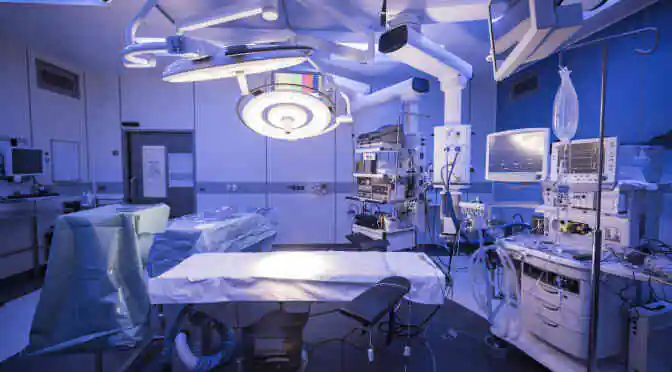In 2013, more than 23 million aesthetic procedures were performed worldwide. The aim of aesthetic medicine is to use minimally invasive cosmetic treatments to enhance physical appearance.
Advances in technology in the field of laser-based aesthetic treatments led to the growth of the market in the late 1990s. In developed countries, aesthetic medicine is a part of the normal health management procedure.
The marketing strategies adopted by clinics and vendors also play a major role in attracting customers toward such treatments.
The Four Most Popular Medical Lasers
Diode Laser Systems
A diode laser system is a semiconductor device that emits coherent radiation in the infrared or visible spectrum when current passes through it. Diode laser systems are used in medical diagnosis, optical fiber systems, therapies, and treatments. Diode lasers produce wavelengths in the 375-1,800 nm range. Low power diode lasers are used for soft tissue treatments. Higher power diode lasers are used in dentistry and medical aesthetics.
Diode lasers are also used in medical applications such as performing delicate surgical procedures on the eye. High-power diode lasers consist of a diode laser bar, a heat sink on which the bar is mounted, and some micro optics.
Diode lasers are the best substitutes for solid state lasers because they are small, cheap, and have low power requirements. Individual diode lasers deliver low optical power compared to solid state lasers.
Solid State Laser Systems
In a solid state laser, the lasing material is distributed in a solid matrix, which contains solid state gain media such as glass or crystals doped with semiconductor, rare earth, or transition metal ions. Ion-doped solid state lasers or doped insulator lasers are made in the form of waveguide lasers, bulk lasers, or other types of fiber lasers. Solid state lasers generate output powers in the range of a few milliwatts to many kilowatts (in high-power versions).
A typical solid state laser consists of two main components: The optics (lasing crystal and mirrors) and the electronics (internal controls and power supply). The two components are integrated into a single box. The laser consists of a cavity with spherical mirrors or plane at each end and is filled with a crystal medium whose atoms are tightly bonded. A light is pumped into the medium by either a laser or lamp. This process makes the crystal medium produce light, and it bounces between the mirrors producing a bright light with high intensity.
Gas Lasers
Gas lasers use a gas or plasma as the gain medium. In a gas laser system, stimulated emission is achieved by pumping the gas with an electric discharge or by a chemical reaction. During operation, the gas is often in the state of plasma, containing a significant concentration of electrically charged particles. Most gas laser systems either use argon (argon-ion), helium-neon, or CO2. The type of gas used determines the laser’s wavelength, efficiency, and power.
Gas lasers are used in applications that require laser beams with long coherence lengths, high beam quality, or single mode operation. Helium-neon lasers are a commonly used multifunctional laser in low power laser applications in education or laboratory settings. Argon-ion lasers are ideal for visible or near-ultraviolet applications.
CO2 lasers are used in a variety of applications such as gas sensing, molecular spectroscopy, environmental monitoring, or for testing night vision in ophthalmology. Most gas lasers emit a high beam quality close to diffraction-limited light. Most gas lasers come with a self-terminating laser exchange option, where the lower state has a long lifetime. Nitrogen lasers and copper vapor lasers are perfect examples of this type of laser.
A gas laser system contains a mixture of gases inside a small gas chamber or tube. A voltage is applied to the tube by an external pump source to excite the atoms in the gas to a population inversion. The light emitted from this type of laser is normally in the form of a CW.
Dye Laser Systems
A dye laser system uses a dye, typically in a liquid solution, as the gain medium. Different dyes are available and each dye works in different wavelength regions. Solvents such as p-dioxane, ethanol, and dimethyl sulfoxide are used as laser dyes. The dyes are purchased in powder form and then made into a solution of the desired concentration.
Most laser dye systems use organic molecules in liquid form as the dye solution. In rare cases, solid laser dyes and vapor dyes can also be used. Dye lasers are normally pumped at relatively short wavelengths. A wide range of emission wavelengths from the ultraviolet to the near-infrared region can be achieved with different laser dyes.
The laser resonator of a dye laser system consists of the following main components:
- Dye jet or a dye cuvette
- Birefringent tuner
- Output coupler
The laser resonator of a dye laser contains a dye cuvette or a dye jet as the laser gain medium. In addition, a birefringent tuner or a diffraction grating (usually one or several frequency-selective elements) is also present to regulate wavelength. Narrow linewidth lasers contain extra frequency filtering components such as etalons. These components have sophisticated computer-controlled tuning mechanics to accurately set the required emission wavelengths. A stable linear polarization of the output is usually obtained as an outcome of the choice of tuning elements used.



